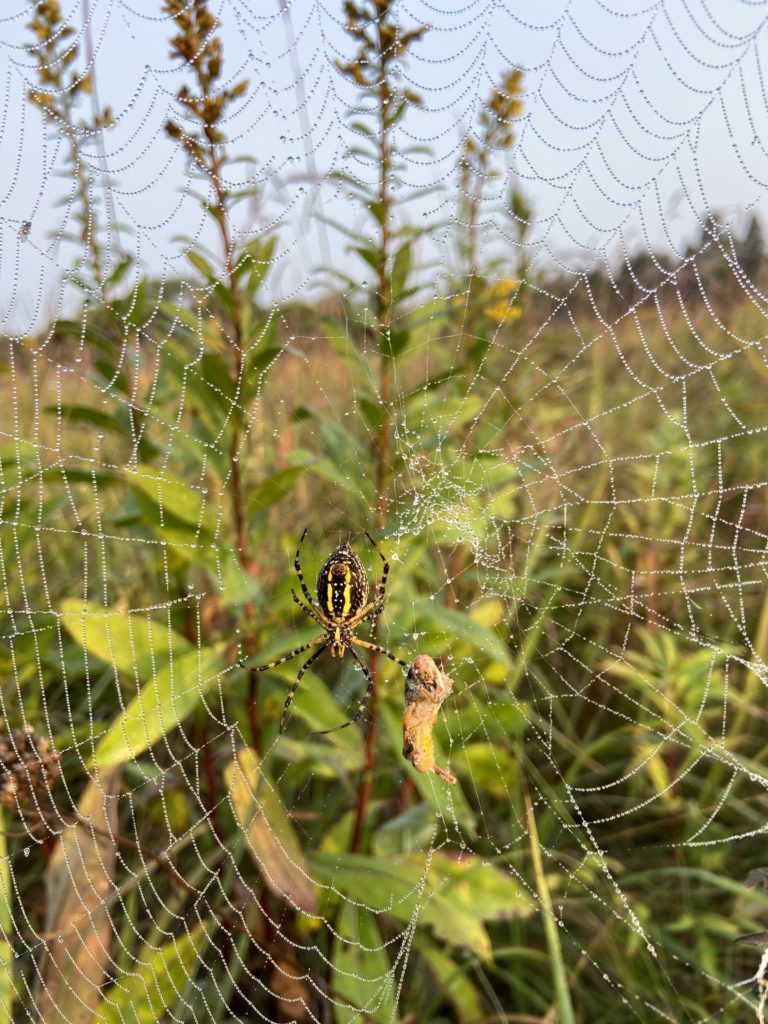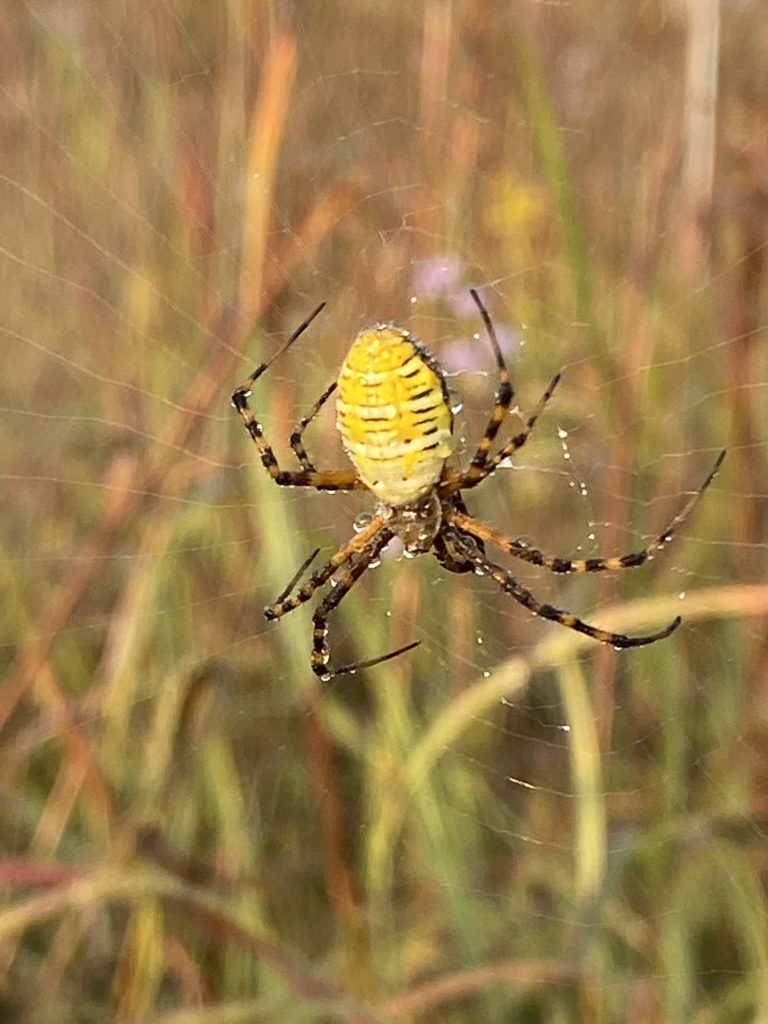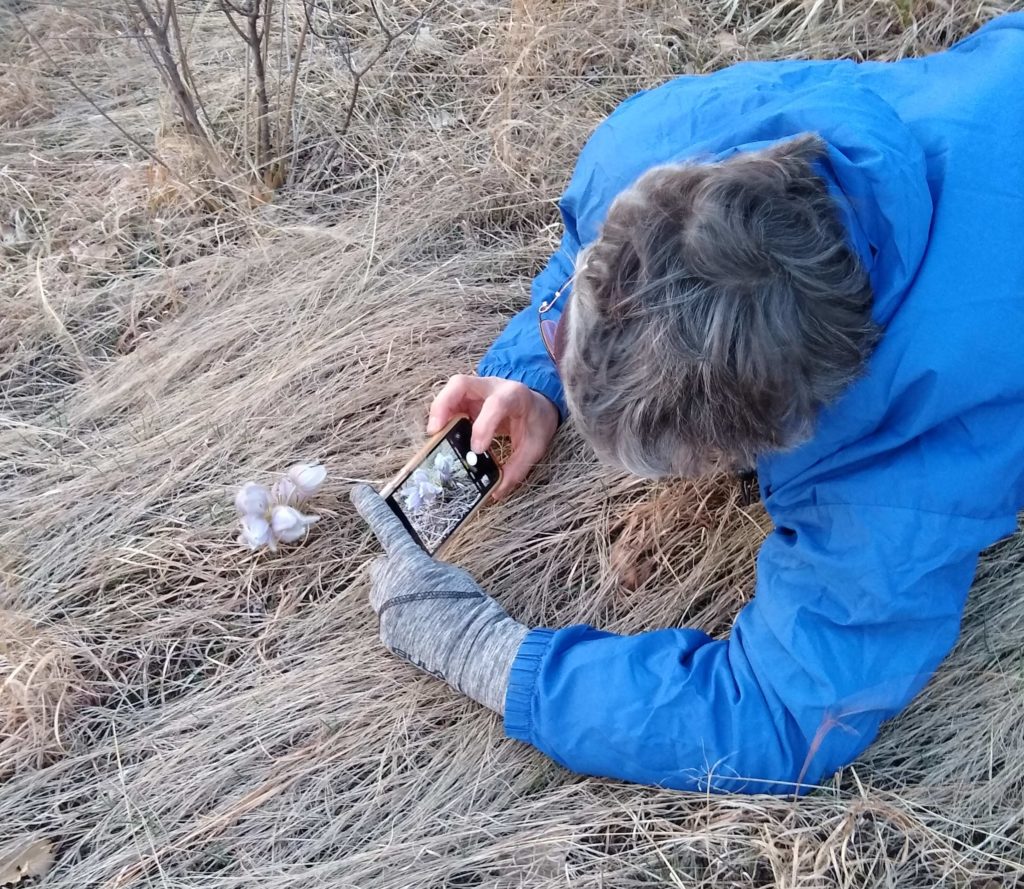If you happen to go for an early hike on a dewy morning at Stagecoach Prairie, you may notice beautifully woven orbs of white glistening in the morning sun.
If you pause and look more closely you may see the glow of yellow and black that are characteristic colors of what are called garden spiders. The black and yellow Argiope (ar-JYE-o pee) and the banded Argiope are both common spiders in Minnesota.
While some folks are less than enamored with spiders, these creatures are nothing short of amazing and they deserve our respect.
Consider these fun facts:
Weaving spiders can build a web in about one hour!
The silks of some can rival the tensile strength of steel. Some orb weavers make new webs every day and dismantle the old ones at the end of the day.
Spiders spin two types of silk!
Dragline, (or non-sticky silk) is the architectural support for the web. Stiff and dry, it forms the web’s foundation. Viscid (or sticky silk) is wet and flexible silk that creates the familiar spiral shape of many webs. It is this stickier silk that snares prey. Spiders only walk on the dragline silk as they move in to immobilize their next meal.

Spiders are excellent pest control!
Spiders eat a variety of indoor and outdoor pests. This includes roaches, aphids, moths, earwigs and mosquitos. Spiders can survive on as little as two insects a day.
Spiders are great moms!
Almost all spider moms create a silk bed for their eggs and cover them with a silk blanket. The mother will guard the egg sac until they hatch and stays with the spiderlings until they are fully developed.
Most spiders have venom to paralyze or kill their prey!
Spider venom has been found to hold potential as a non-addictive pain medication as well as other medical benefits.
Spiders are excellent adaptors!
Wind, rain, brooms, dust cloths, all wreak havoc on a spider’s life. Their home can be demolished in a matter of seconds. In order to survive, they need to drop to the ground, seek cover and rebuild quickly to stay alive.

Not an insect, spiders belong to the Arachnid family, which includes mites, ticks, scorpions and (daddy long legs) harvestmen.
All members of this family have 8 legs, no antenna, and bodies that are divided into two sections, the cephalothorax in front and the abdomen behind.
Spiders are creatures of beauty and resilience, quick action and change.
The next time you encounter a spider — be it in your home, in your yard or on the trail — give pause to appreciate the beauty and many facets of a spiders life. You may find you can live in harmony with one or two in your home, and who knows, just like in the children’s book Charlotte’s Web, you may begin to see words like “terrific person” or “radiant human” or “Thank You” show up in a corner of your ceiling!
See you on the trail!

Attend an upcoming event with Lynette as your guide! Visit our events page for more information.